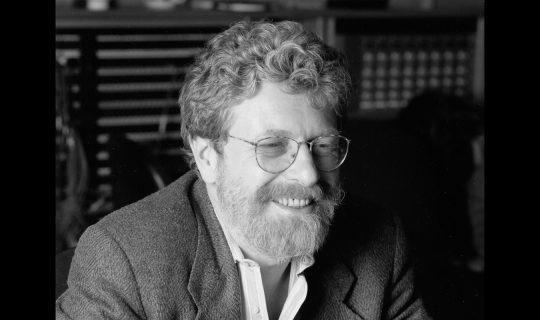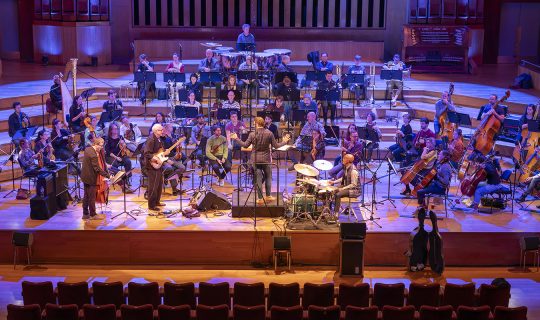February 23, 2013
The 1999 CD reissue of Herbie Hancock’s My Point of View comes with an alternate take of “Blind Man, Blind Man.” And that take, recorded with the rest of the album on March 19, 1963, comes with a present. At the beginning of the track, Hancock starts to count the band off but interrupts himself. “Hey, Al?,” he says in an impossibly hip voice to View producer (and Blue Note founder) Alfred Lion. “Chuck is gonna try playing a different note on the bottom. Listen to see how this sounds. I think this’ll do it.” The Chuck in question is dependable Bill Evans bassist Chuck Israels, and he does what he’s told. But before the performance starts, and after “I think this’ll do it,” comes the big line: “If it’s cool, don’t say anything.”
If it’s cool, don’t say anything. For Hancock, then twenty-two years old and already recording his second album as a leader (his first, Takin’ Off, was also for Blue Note), music was everything. Words weren’t necessary. Vibe was huge. If it feels good, we’ll all know it. So only say something if it’s not working. If it’s cool, don’t say anything.
Brought into being by the imposing septet of trumpeter Donald Byrd, trombonist Grachan Moncur III, tenor saxophonist Hank Mobley, guitarist Grant Green, drummer Tony Williams (then seventeen years old and billed as “Anthony”), Israels, and Hancock, the five-song My Point of View is a variety show in four acts. The Latin portion of the evening arrives in the form of the aforementioned “Blind Man, Blind Man,” which Blue Note clearly hoped would repeat the success of 1962’s similar-sounding “Watermelon Man”—the cover of View reads: “Includes his new composition ‘Blind Man, Blind Man.’”
On top of funky piano vamping, a gentle bass ostinato, and a subtle beat from Williams, the horns massage a simple, catchy melody. But the piece, named for a blind guitarist the leader encountered on a street corner while growing up in Chicago, is most memorable for the pair of saucy breaks shared by Hancock and Green alone. Even though they’re composed, one feels thankful during the song-ending head for the opportunity to hear the combination of just Green’s sleek six-string and Hancock’s knowing piano again. Green and Hancock had met in the studio before—on the sessions for Green’s albums Goin’ West and Feelin’ the Spirit—and they would hook up again, on Lee Morgan’s Search for the New Land and Byrd’s I’m Tryin’ to Get Home.
The album’s ghost story is the foreboding “King Cobra.” Centered around the pumping piano rhythm that, when slowed down, would become the foundation of Hancock’s “Maiden Voyage,” “Cobra” features an enigmatic three-part horn melody that floats and moans and rises and falls. The first to go one-on-one with the snake is Byrd, whose improvisation is tough and fearless. Mobley follows with a strong attack, too, but Moncur holds up best against the beast, calmly riffing it into a corner. After a lively pep talk from Hancock, Williams has the last word, capturing the cobra with sharp hi-hat smacks, tasteful tom taps, and determined snare hits.
The seven-piece takes it to Soulsville with the defiantly titled “And What If I Don’t.” Taken at a down-home, moseying pace and beginning with a heartbreaking move from Eb down to C in the bass, “Don’t” moves its horn trio from the jazz club to the back porch with an uncomplicated, down-but-not-out melody. Green is right at home in these environs, issuing a short but gut-wrenching dispatch between bursts of creativity from the leader and Byrd. Mobley turns in perhaps the most affecting improvisation of the take, though, grooving and blues-ing with world-weariness and heart. In the original liner notes, on the topic of “Don’t,” Hancock tells Ira Gitler, “R&B may have been simple in harmony but it has a feeling that was close to the everyday.” With “Don’t,” Hancock cozies up to that emotion.
The ballad section of the night washes ashore in two waves: “A Tribute to Someone” and “The Pleasure is Mine.” Penned while Hancock was still a teenager, “Tribute” opens with the leader dropping harmonies both bright and curious over an F bass pedal. Then it’s off to the sleepy races, with Byrd and Mobley delivering the composition’s romantic, lyrical composed lines. Post-head, Byrd matches soulful strutting with swift asides; Mobley turns in joyful, smiling comments; and Hancock gives crisp, sparkling notes. The song ends on the same insistent F that got it started, this time decorated with a dissonant chord from Hancock and a legato cry from Byrd. “The Pleasure Is Mine” begins ominously, but soon brings out a lush, satisfied intertwining of Mobley, Moncur, and Byrd. The only solo belongs to Hancock, but it’s gorgeous—tones scamper and skip, sashay and swing.
Circling back around to the alternate take of “Blind Man, Blind Man,” which brings the ’99 CD reissue of View to a close, it must have been a difficult call deciding which version to place on the original album. On the alternate take, the ensemble sounds tight, and the improvisations from Green and Mobley are inspired. But Israels’s original bass note sounds better, and that elusive Special Something is missing.
More than just an ambitious early effort from the Chameleon, View was also Hancock’s last album before joining the big leagues. Less than two months after the recording of View, Hancock, Williams, and bassist Ron Carter were summoned to Miles Davis’s home for a session. While the rhythm section jammed, the trumpeter listened in another room over an intercom. This went on for three days, and on the third day, Davis was joined by two more observers: Gil Evans and Philly Joe Jones. At the conclusion of the jam attended by Evans and Jones, the trio was informed that the following day’s music would be made in the studio. On May 14, Hancock officially joined the Miles Davis Quintet by bringing his point of view to three tracks that would be included on the album Seven Steps to Heaven.






